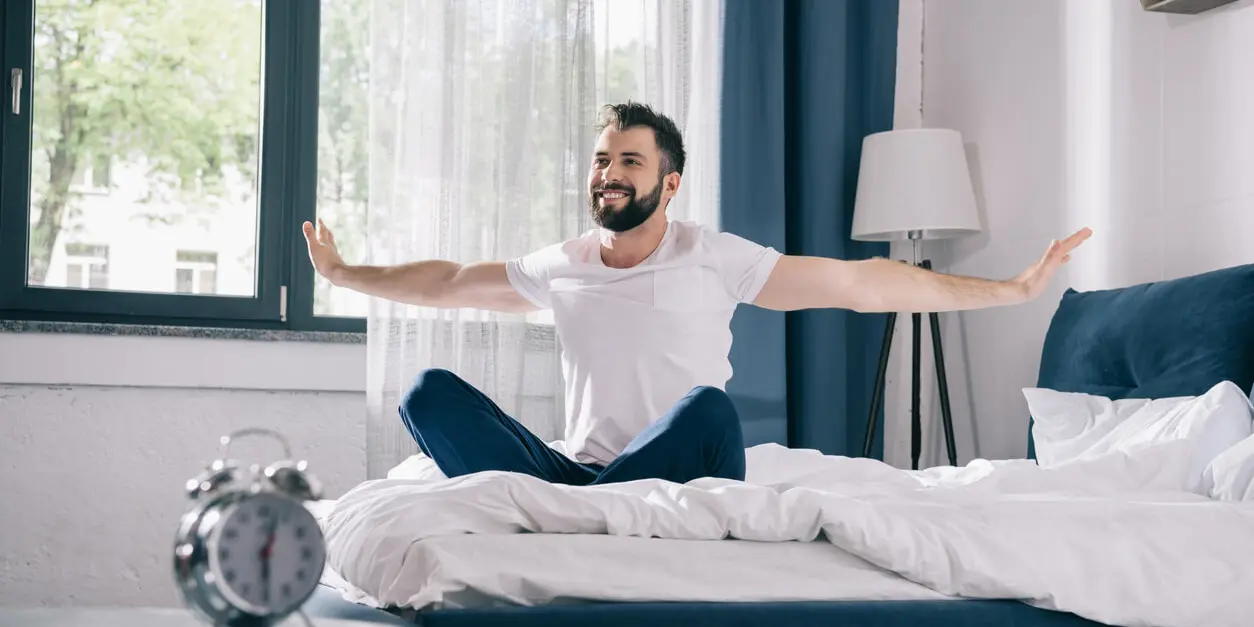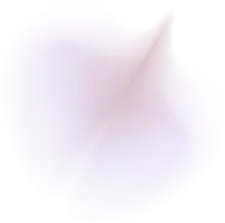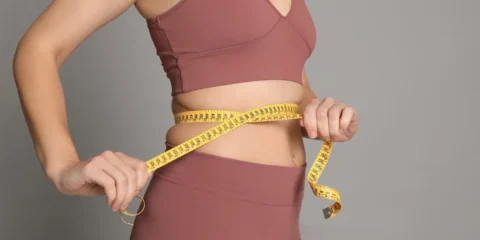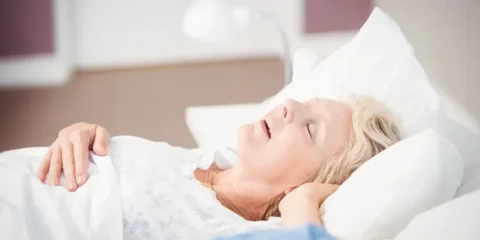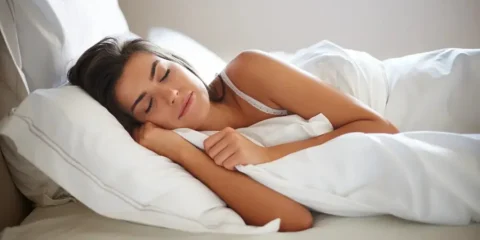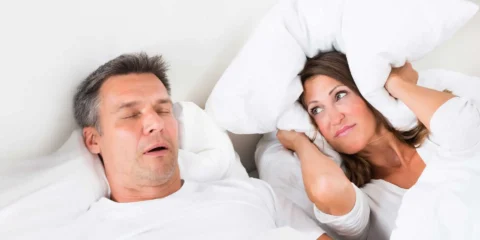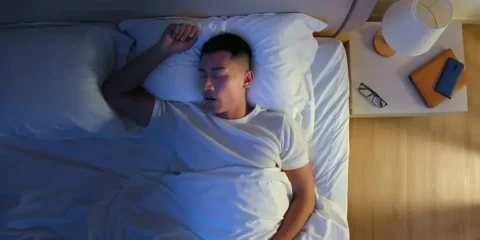Causes, Symptoms, and Modern Treatment Options
Do you wake up feeling exhausted, even after what seemed like a full night’s sleep? Do you struggle with loud snoring, restless sleep, or abrupt breathing pauses as you slumber?
If this sounds familiar, you may be one of the estimated 22 million Americans suffering from sleep apnea. This chronic disorder impedes breathing during sleep, depriving the body of restorative rest and leaving you drained and sleepy throughout the day.
While historically sleep apnea was considered an annoyance, recent research reveals it may lead to serious health complications like heart disease, diabetes, and stroke if left untreated.
Luckily, new medical advancements are transforming outdated sleep apnea therapies into convenient and comfortable treatment options.
What is Sleep Apnea?
Sleep apnea is a common sleep disorder characterized by pauses in breathing or instances of shallow or infrequent breathing during sleep. It is caused by a blockage of the airway, usually when the soft tissue in the back of the throat collapses during sleep. This results in decreased oxygen levels and disrupted sleep.
There are three main types of sleep apnea:
- Obstructive Sleep Apnea (OSA): The most common form of sleep apnea, caused by blockage of the airway. This occurs when throat and tongue muscles relax during sleep, causing the airway to narrow or collapse, blocking oxygen intake.
- Central Sleep Apnea (CSA): Caused by a miscommunication between the brain and muscles that control breathing. The brain fails to signal the muscles to breathe, causing inadequate or suspended breathing.
- Complex Sleep Apnea: Also called “mixed sleep apnea” this condition is a distinct form of sleep apnea that occurs when someone who previously had obstructive sleep apnea develops central sleep apnea due to treatment with CPAP. It is a combination of obstructive and central sleep apneas. Complex sleep apnea has recognizable characteristics that are present without, and often worsened during, treatment.
During sleep, air passes through the throat, down the windpipe into the lungs. In someone with sleep apnea, the airway narrows or collapses when throat muscles relax, blocking air intake. As oxygen levels drop, the brain sends distress signals, partially awakening the person to resume breathing. These interruptions prevent restorative sleep.
Common symptoms of sleep apnea include:
- Loud, chronic snoring
- Pauses or choking noises during sleep
- Excessive daytime sleepiness or fatigue
- Morning headaches
- Restless or interrupted sleep
- Trouble concentrating or memory issues
- Irritability or mood swings
Introducing NightLase®: A Revolutionary Solution for Sleep Apnea
Allure Medical presents a groundbreaking alternative: NightLase® therapy.
This innovative approach addresses the core issues of sleep apnea and snoring without the need for cumbersome devices or chemical treatments.
How NightLase® Works
NightLase® employs laser-induced tightening effects, targeting the oral mucosa tissue. This reduces the effects of sleep apnea and decreases the amplitude of snoring, offering a non-invasive yet highly effective solution.
Benefits of NightLase® Therapy
- No Devices Required: Forget about sleeping with a cumbersome device.
- Chemical-Free: No need for any pharmaceuticals or chemical treatments.
- High Success Rate: Many patients report significant improvements in their sleep patterns.
- Long-Lasting Results: The effects have been shown to last up to a year, with the option for follow-up treatments.
Schedule a consultation with Allure Medical today and learn more how NightLase can help you with sleep apnea.
Health Implications of Sleep Apnea
Sleep apnea is linked to serious cardiovascular conditions like high blood pressure, arrhythmias, heart disease, and stroke. When breathing stops, oxygen levels drop and carbon dioxide rises. This triggers higher blood pressure and quicker heart rate as the body struggles to normalize. Stress on the cardiovascular system increases risks of heart attack and heart failure.
The intermittent hypoxia caused by sleep apnea also induces oxidative stress and inflammation in the body, impacting vascular and metabolic function.
Those with sleep apnea are more likely to develop insulin resistance, metabolic syndrome, and type 2 diabetes. The oxidative stress affects glucose metabolism and insulin secretion.
Cognitive impairments like poor memory, lack of focus, and moodiness often occur due to the constant sleep interruption. Brain function relies on restorative sleep.
Diagnosing Sleep Apnea
Consulting a sleep specialist is recommended for suspected sleep apnea. A physician will review medical history looking for related conditions like obesity, heart disease, or nasal passages obstruction. Lifestyle factors and family history provide insight too.
From here, sleep studies are used to diagnose and assess sleep apnea severity. The main methods include:

Mild cases present with less pronounced symptoms, but should still be treated to prevent progression. Moderate to severe sleep apnea will display regular oxygen drops, louder snoring, and more breathing interruptions.
Treatment for Sleep Apnea
The most common and effective treatment for moderate to severe obstructive sleep apnea is CPAP therapy. A mask worn over the nose and/or mouth is attached to a machine that delivers constant air pressure to keep airways open during sleep.
While adjusting to CPAP can take time, most find it eliminates apnea events and restores healthy oxygenation. The pressurized air prevents throat tissues from obstructing breathing.
Variations like automatic CPAP or bilevel PAP allow pressure levels to adjust as needed based on breathing patterns. This increases comfort. Heated humidifiers reduce airway dryness.
Oral appliance therapy uses mouth guards or devices to maintain an open, unobstructed airway during sleep. These work best for mild or moderate OSA cases. Mandibular advancement devices move the jaw forward to open airways.
Oral pressure therapy uses a small mouthpiece to pull the tongue forward and stabilize it, preventing it from obstructing breathing during sleep.
For overweight patients, weight loss of 10-15% can reduce apnea severity by opening airways. Diet and exercise should be encouraged.
Some surgical procedures remove obstructions like tonsils or adenoids, correct deviated septums, or stiffen the soft palate. Effectiveness varies based on individual anatomy.
Finding the right treatment often takes some trial and error. A sleep specialist can determine the best first line therapy based on sleep study severity, then try other options if necessary. The goal is restful sleep and normalized oxygenation.
How to Manage Sleep Apnea
There are several lifestyle modifications that can help manage and reduce symptoms of sleep apnea:
1. Aim to Lose Weight
Losing excess weight can significantly improve sleep apnea. Even a small amount of weight loss can open up breathing passages and improve airflow during sleep. Aim to reach a healthy body weight through diet, exercise, and other lifestyle changes.
2. Do More Exercise
Getting regular physical activity can help with weight loss and tone upper airway muscles. Try to get at least 150 minutes per week of moderate aerobic activity, such as brisk walking or swimming. Also aim for 2-3 days per week of strength training.
3. Avoid Alcohol and Smoking
Alcohol and tobacco use can relax throat muscles and constrict airways, worsening sleep apnea. Quitting smoking and limiting alcohol, especially before bedtime, can help reduce apnea episodes.
4. Optimize Your Sleep Position
Sleeping on the back worsens sleep apnea in many people. Try side sleeping instead to keep airways open. Some devices can prevent you from rolling onto your back during sleep.
Making lifestyle modifications can significantly improve sleep apnea, especially when combined with other treatments like CPAP therapy. Work closely with your doctor to determine the best lifestyle changes to incorporate.
Conclusion
Sleep apnea is a serious but treatable condition. Recognizing common signs and symptoms allows for earlier diagnosis and treatment to prevent health risks. Various therapy options let patients find regimens that work for their needs.
Seeking guidance from qualified sleep medicine professionals and regularly communicating with healthcare providers leads to better long-term management. Prioritizing healthy sleep is vital for living well with sleep apnea. Consult with Allure Medical’s team of sleep health experts for thorough care. Schedule your visit today!


